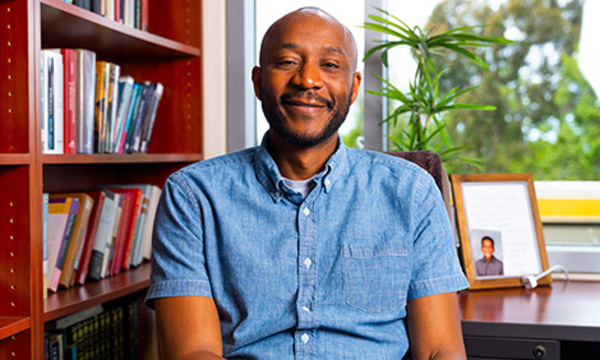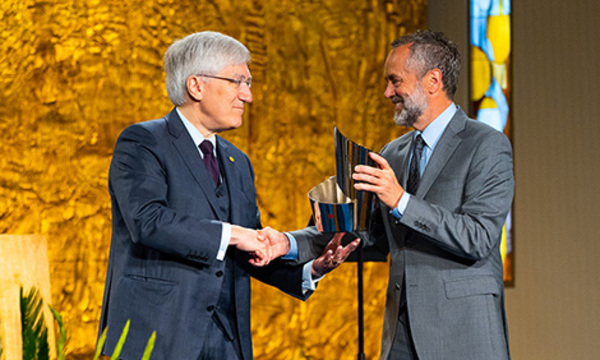For several years, IÔÇÖve interacted with the University of Chicago evolutionary biologist Jerry Coyne. Coyne doesnÔÇÖt like me, and I canÔÇÖt really blame him for that. HeÔÇÖs an atheist who thinks that DarwinÔÇÖs theory of natural selection solved the problem of biological complexity, at least in principle, whereas I am a Christian who thinks that life is best understood as the product of intelligent design by a divine Creator.
Nevertheless, despite our differences, and his obvious antipathy for me, I am fond of Coyne. Like me, he loves cats, delicious calorific food for which one neednÔÇÖt apologize, such as barbecued ribs, and classic rock. I wish I could say the same, however, for CoyneÔÇÖs view of how scientific evidence and belief in God intersect.
Recently, Coyne published a book, Faith Vs. Fact: Why Science and Religion Are Incompatible, in which he argued that the scientific outlook ÔÇö with features such as weighing publicly available evidence, testing oneÔÇÖs theories against nature and revising them in the light of contrary data ÔÇö is really only compatible with atheism.
Yet Coyne also argues that he does not hold his atheist worldview dogmatically. Should the right evidence come along, he says, his atheism could be overturned. Should the right evidence come along, he says, his atheism could be overturned. Now, to read that in FvF was encouraging. No one wants to participate in a debate about origins where the evidence has been rendered irrelevant, making any hope of persuasion impossible.
But reading further into Faith Vs. Fact revealed a philosophical magic trick concealed in CoyneÔÇÖs apparent open-mindedness to the power of evidence. ItÔÇÖs a trick worth analyzing in detail, because the move takes away with one hand what was apparently offered with the other. HereÔÇÖs how the trick works, separated into its three major steps. Watch carefully.
1. Reject the doctrine of methodological naturalism.
Chances are if youÔÇÖre an atheist, your audience will expect you to endorse methodological naturalism (MN). MN holds that science may explain using only undirected physical or material causes. No appeals to GodÔÇÖs agency are allowed. To quote Harvard biologist Richard Lewontin, we ÔÇ£cannot allow a Divine Foot in the door.ÔÇØ MN is thus a fundamental ground rule of science.
Coyne disagrees, rejecting this absolute form of MN. ÔÇ£Lewontin was mistaken,ÔÇØ he writes. Although we havenÔÇÖt yet seen that Foot, we might. ÔÇ£We can in principle allow a Divine Foot in the door,ÔÇØ Coyne acknowledges ÔÇö so MN cannot govern science in every aspect. A surprise turn like this throws your audience off balance.
2. Specify the evidence for God that you would accept.
Coyne grasps that thereÔÇÖs little point in allowing the possibility of evidence for GodÔÇÖs existence if one cannot describe what evidence would suffice. So he offers some candidates. ÔÇ£If, for example, supernatural phenomena like healing through prayer, accurate religious prophecies and recollection of past lives surfaced with regularity and credibility, we might be forced to abandon our adherence to purely natural explanations,ÔÇØ he writes.
Seems open-minded, right? Next comes the critical step ÔÇö and here is where the rabbit of evidence for God disappears into CoyneÔÇÖs philosophical hat.
3. Say that any explanation invoking divine action is a God-of-the-gaps.
LetÔÇÖs say we have some longstanding puzzle, such as the origin of life, which many theists see as evidence for GodÔÇÖs existence (that is, the complexity of the first cell requires a non-physical cause with purpose, creativity and the power to bring into existence information-bearing molecules such as DNA). Why isnÔÇÖt this evidence for God?
Because, Coyne contends, ÔÇ£scienceÔÇØ ÔÇö by which he actually means applied materialism or naturalism ÔÇö must never be foreclosed by hasty appeals to divine action, or to God-of- the-gaps explanations. What is more likely, he asks, ÔÇ£that these are puzzles only because we refuse to see God as an answer, or simply because science hasnÔÇÖt yet provided a naturalistic answer? ... Given the remarkable ability of science to solve problems once considered intractable, and the number of scientific phenomena that werenÔÇÖt even known a hundred years ago, itÔÇÖs probably more judicious to admit ignorance that to tout divinity.ÔÇØ
Master this conjuring trick, and one canÔÇÖt lose. No matter how remarkable the evidence for GodÔÇÖs action might be, either in cosmic history or today, one can always make that evidence disappear into the bottomless bag of ÔÇ£the God of the gapsÔÇØ objection.
Calling Trickery What It Is
ThereÔÇÖs a simple reply to this sleight of hand. If God is a real cause, he may have left ÔÇ£gapsÔÇØ in the natural order as his signature. These gaps ÔÇö call them designed or created discontinuities ÔÇö wonÔÇÖt go away, or be dissolved into strictly material or physical causes. The discontinuities exist, not because of the incompleteness of our scientific knowledge, but rather because they are real markers left in the world, indicating the handiwork of a divine intelligence.
Science as a genuinely open enterprise, where all the causal possibilities, including design, are on the table for discussion, must consider that we can discover and map these discontinuities. Coyne shouldnÔÇÖt pretend that heÔÇÖs truly weighing the evidence for GodÔÇÖs existence if he intends to sweep everything puzzling to materialism into his magicianÔÇÖs bag.
Science ÔÇö not to mention philosophy and theology ÔÇö deserves better.
Paul A. Nelson is an adjunct professor in BiolaÔÇÖs Master of Arts in Science and Religion program. He is also a fellow of the Discovery Institute and has a Ph.D. from the University of Chicago in the philosophy of biology and evolutionary theory.
 ¢±╚ı║┌┴¤
¢±╚ı║┌┴¤
.jpg)

